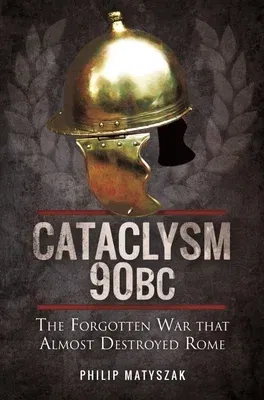We are accustomed to think of the late Republic as a period in which
Rome enjoyed almost uninterrupted military success against foreign
enemies. Yet at the start of the first century BC, Rome, outnumbered and
out-generaled, faced a hostile army less than a week's march from the
capitol. It is probable that only a swift surrender prevented the city
from being attacked and sacked. Before that point, three Roman consuls
had died in battle, and two Roman armies had been soundly defeated - not
in some foreign field, but in the heartland of Italy. So who were this
enemy who so comprehensively knocked Rome to its knees? What army could
successfully challenge the legions which had been undefeated from Spain
to the Euphrates? And why is that success almost unknown today?
These questions are answered in this book, a military and political
history of the Social War of 90-88 BC. This tells the story of the
revolt of Rome's Italian allies (socii in Latin - hence the name of
the war). Because these Italian allies had the arms, training, and
military systems of the Roman army which they usually fought alongside,
all Rome's usual military advantages were nullified. This brought the
war down to a clash of generals, with the Roman rivals Gaius Marius and
Cornelius Sulla spending almost as much time in political intrigue as
combat with the enemy. The Italian leaders had to manage an equally
fractious coalition of peoples. Some tribes sought negotiation with
Rome, and others would settle for nothing less than the total
extermination of the city and its people. The interplay of personalities
(the young Cicero, Cato, and Pompey were also protagonists); high-stakes
politics and full-scale warfare combine with assassination; personal
sacrifice and desperate measures (such as raising an army of freed
slaves) to make for a taut, fast-paced tale.

